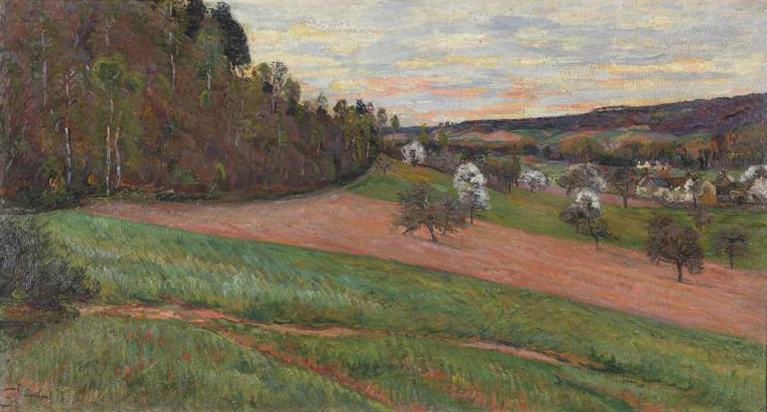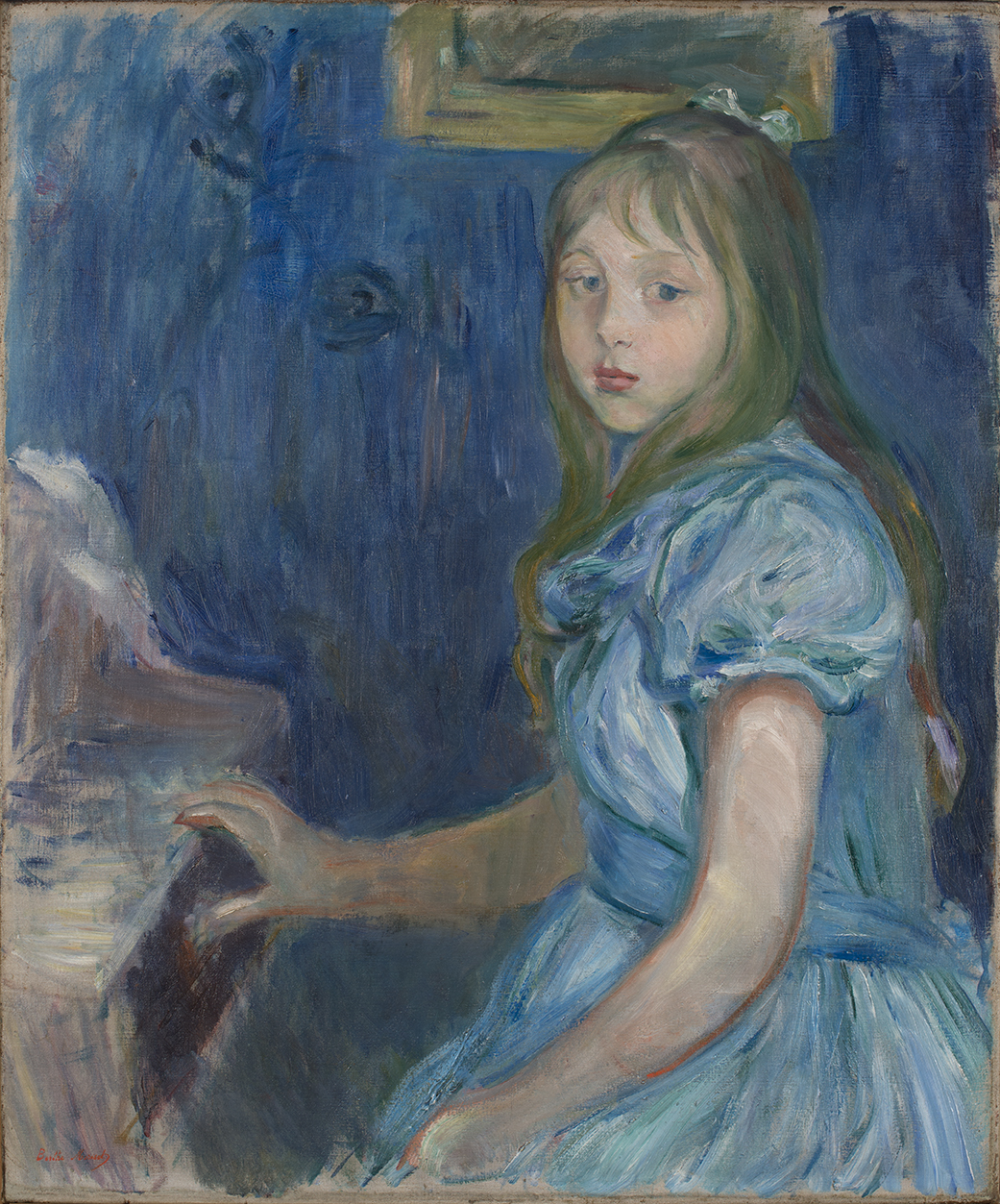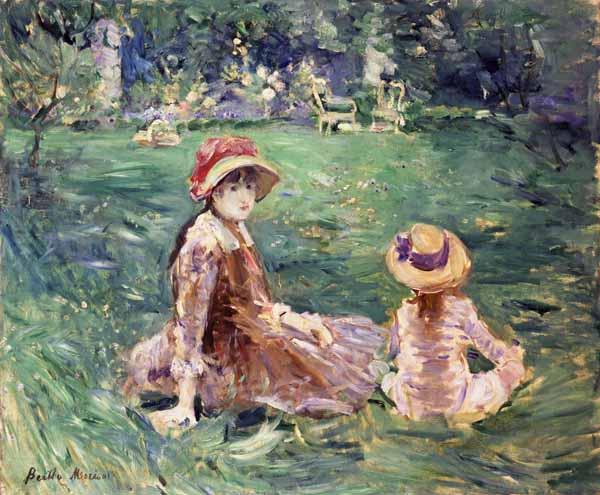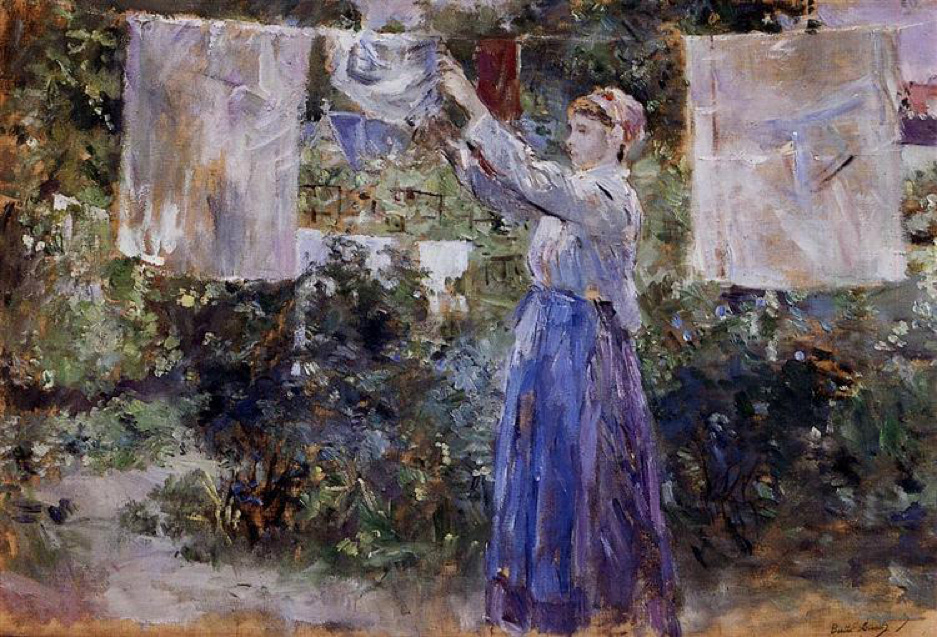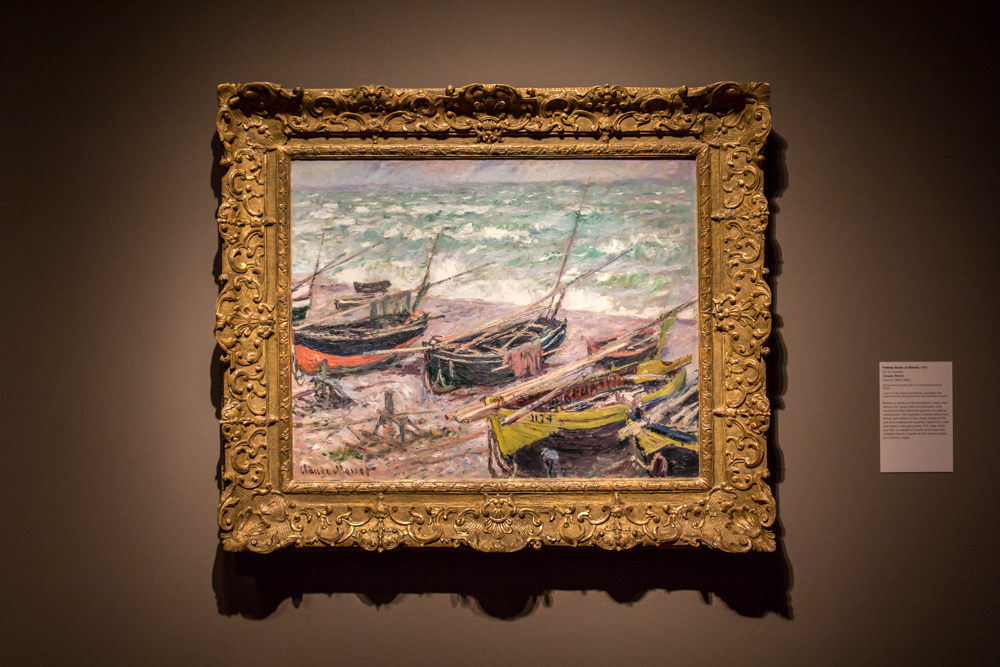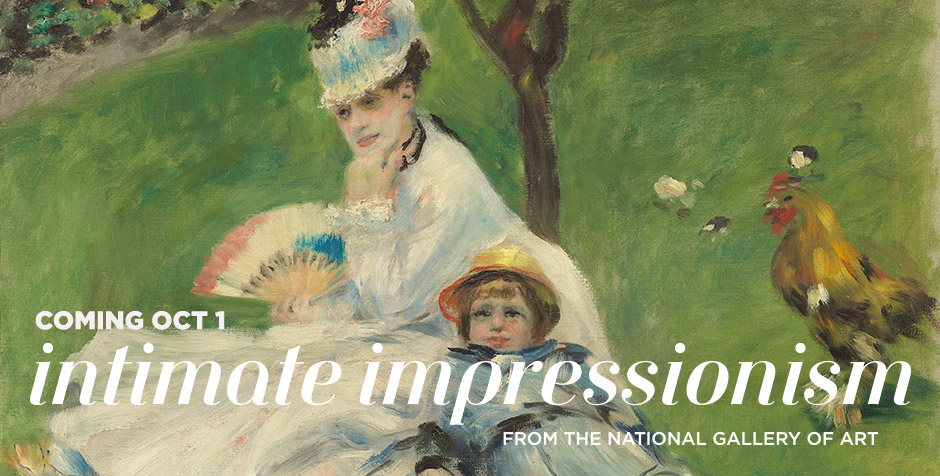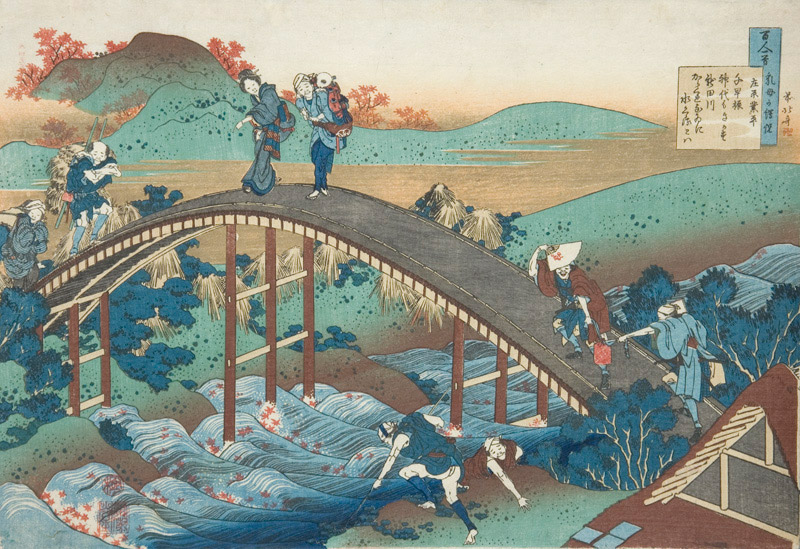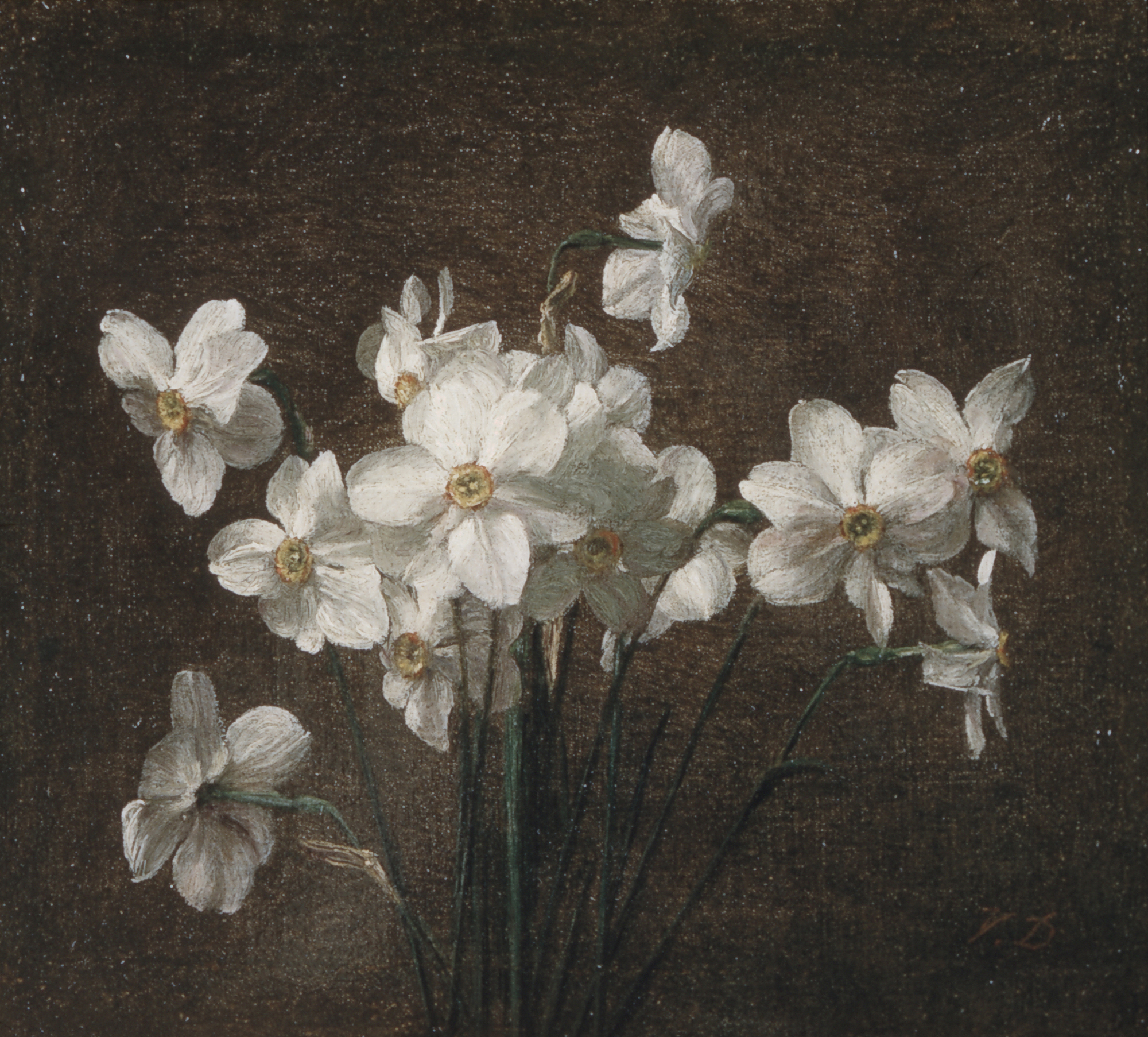There’s nothing like a good rivalry to spice up a moment in history. I’d say it’s a rare historical note that isn’t improved by some verbal sparring or a gauntlet being thrown. Happily for us, the European Impressionists not only created a remarkable group of paintings, but also produced a natural rivalry in Edouard Manet (1832-1883) and Claude Monet (1840-1926). Manet was a leading influence in the years before Impressionism flowered, and when it did, Monet took the torch from him, becoming the new movement’s unquestioned leader.
In John Rewald’s History of Impressionism, we read about Manet’s first encounter with the younger Monet. The scene is the Paris Salon exhibition of 1865:
The two canvases shown by Monet were views of the Seine estuary, done near the lighthouse of Honfleur. Since the works at the Salon were now hung in alphabetical order to prevent favoritism, Monet’s works found themselves in the same room with Manet’s. When the latter entered this room on the opening day, he had the disagreeable surprise of being congratulated by several persons upon his seascapes. Having studied the signatures on the two pictures attributed to him, Manet at first thought it to be some cheap joke; his anger was conceivably not lessened by the fact that the seascapes continued to have more success than his own works. He left in a rage and openly complained to some friends: ‘I am being complimented only on a painting that is not by me. One would think this to be a mystification.’
Although in time Monet and Manet grew to be friendly artist-peers, sometimes painting together outdoors, such was Manet’s frustration at the Salon that he refused his first chance to meet Monet. “Who is this rascal who pastiches my painting so basely?” spouted Manet, in a masterful artist burn.

“Oysters” by Edouard Manet, 1862.
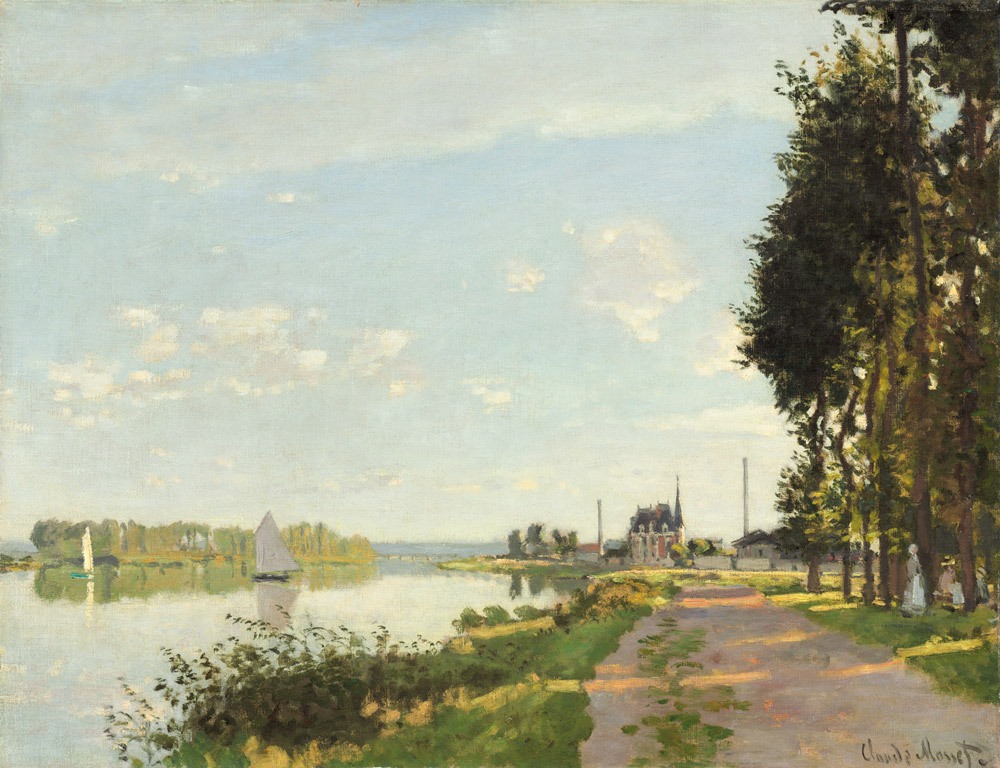
“Argenteuil” by Claude Monet, ca. 1872.
The two names were often confused in those years of Monet’s ascension and are sometimes still confused today, even with 150 years of distance. Comparisons were always inevitable, given the similarity of their names. It’s a great chance for some amusement, too. A famous caricaturist in 19th century Paris, Andre Gill, sketched a figure painting by Monet and attached the caption “Monet ou Manet?—Monet. Mais, c’est a Manet que nous devons ce Monet; bravo, Monet; merci, Manet.” (“Monet or Manet?—Monet. But it is to Manet we owe this Monet. Bravo, Monet; Merci, Manet.”) Cartoons over the years have picked up on the joke and taken it a number of directions. One of my favorite renditions is this Harry Bliss cartoon, originally published in The New Yorker (and for the record, it was Manet).
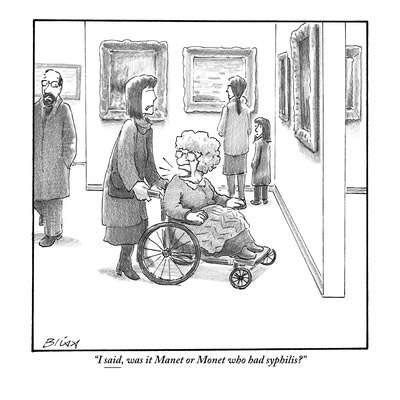
Not only for the syphilis, fate was pretty cruel to Manet: Here’s an artist who cared deeply about being recognized and accepted, who continually submitted paintings to the Salon in search of official stamps of approval—and he was frequently confused with, or overshadowed by, a younger artist who ends up leading the Impressionist movement and becoming one of the most popular artists of all time. And the two were only separated by one letter!
Today, being so far removed from the historical moment makes it easier for us to appreciate Manet’s work on its own, and his contributions to art and painting are widely recognized. Here at the Seattle Art Museum, we also love Monet: our permanent collection features the beautiful harbor scene Fishing Boats at Étretat. So we all arrived at a happy ending. But, just because those rivalries are so much fun, here’s one more spat from Impressionist lore.
On one occasion, Manet went to Argenteuil and set up to paint the Monet family—the artist, his wife, Camille, and his son, Jean—in their garden (this painting is The Monet Family in Their Garden at Argenteuil, owned by the Metropolitan Museum of Art). Colin Bailey, a scholar of French painting and director of the Morgan Library and Museum, recounts what happened next: “While Manet was at work, Renoir arrived, borrowed paints, brushes, and a canvas from Monet, and executed a vivid close-up of Camille and Jean, joined by the rooster. Irritated by Renoir’s intrusion, Manet is reported to have told Monet, ‘He has no talent, that boy. Since he’s your friend, you should tell him to give up painting!’”
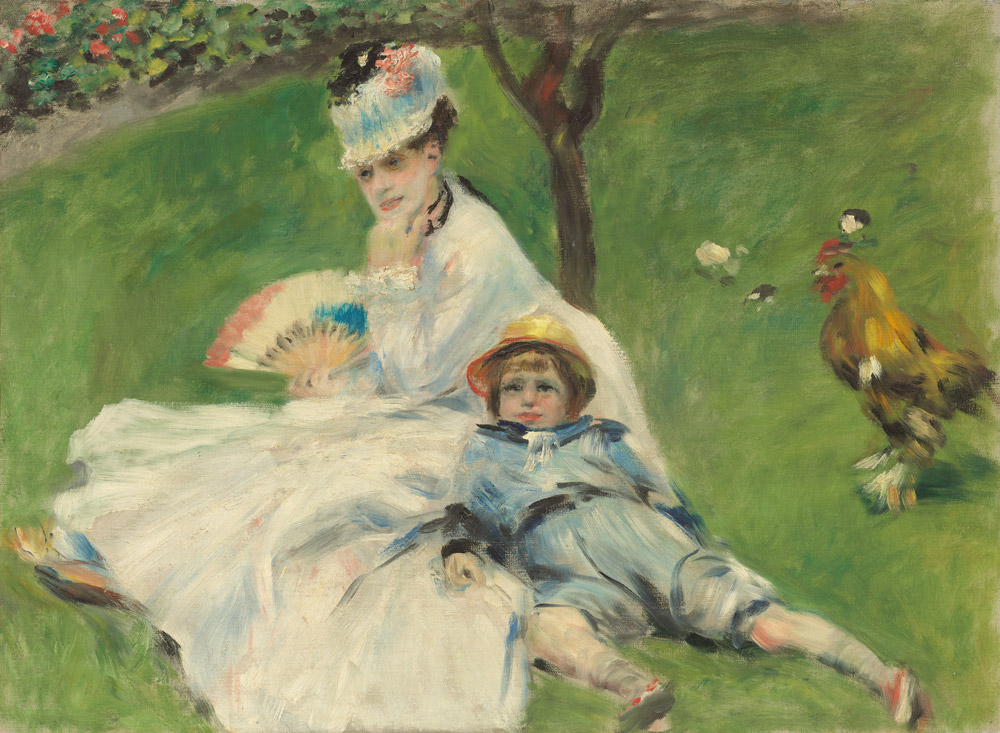
“Madame Monet and Her Son” by Auguste Renior, 1874.
Come tour our brand new exhibition Intimate Impressionism from the National Gallery of Art to see Renoir’s painting of that day in the garden—and judge his talents for yourself! And don’t miss a related SAM Talks event this month with Colin Bailey and SAM’s own director, Kimerly Rorschach. —Jeffrey Carlson, SAM Collections Coordinator
References Bailey, Colin. “The Floating Studio.” The New York Review of Books, April 23, 2015. Rewald, John. The History of Impressionism, 4th revised edition. New York: New York Graphic Society, 1973.
Images: Fishing Boats at Étretat, 1885, Claude Monet, French, 1840-1926, oil on canvas, 29 x 36 in. Partial and promised gift of an anonymous donor, 92.88. Oysters, 1862, Edouard Manet, French, 1832-1883, oil on canvas, 15 7/16 x 18 7/16 in., National Gallery of Art, Washington, DC, Gift of the Adele R. Levy Fund, Inc. Argenteuil, ca. 1872, Claude Monet, French, 1840-1926, oil on canvas, 19 13/16 x 25 11/16 in., National Gallery of Art, Washington, DC, Ailsa Mellon Bruce Collection Cartoon by Harry Bliss, © Condé Nast Collection. Madame Monet and Her Son, 1874, Auguste Renoir, French, 1841-1919, oil on canvas, 19 13/16 x 26 3/4 in., National Gallery of Art, Washington, DC, Ailsa Mellon Bruce Collection
